Terra Cotta in New York City: Beautiful Buildings Adorned in Ceramic
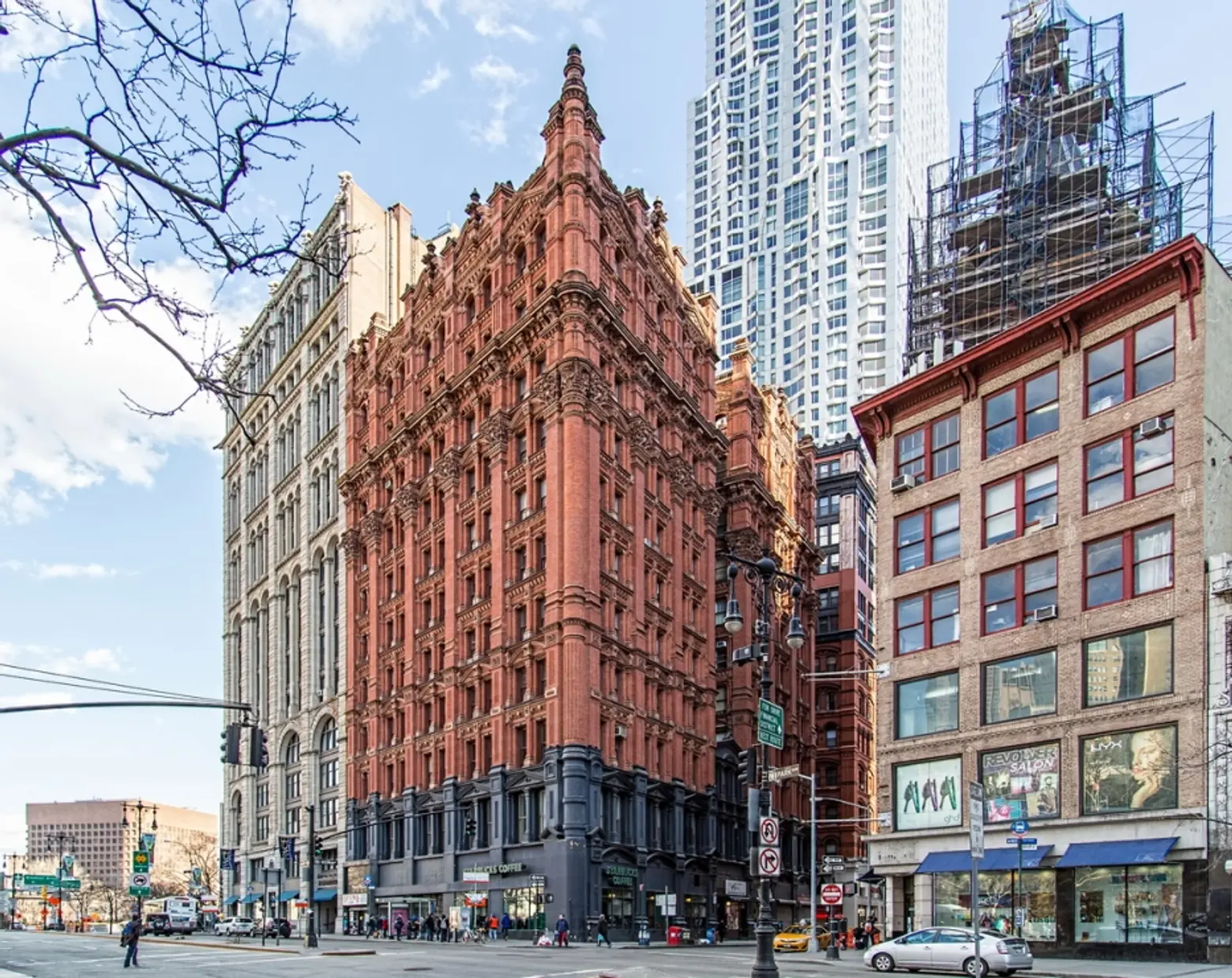
Image © NewYorkitecture
Glazed terra cotta (a clay-based ceramic) became a popular architectural material in the United States between the late 1800’s and 1930’s thanks to being sturdy, relatively inexpensive, fireproof, and easily molded into ornamented detail. Plus, it was easy to make it look like granite or limestone, much more expensive materials.
Terra cotta really took off when some of Chicago and New York’s great architects, Cass Gilbert, Louis Sullivan, and Daniel H. Burnham, incorporated the material in to their most famous works such as the Woolworth Building, Bayard-Condict Building, and Flatiron Building, respectively. Additionally, Rafael Guastavino adorned many of the great Beaux-Arts masterpieces with his famous terra cotta tiled vaults.
There are countless buildings in New York City that owe their elegance to glazed terra cotta, and we’ve put together a list of some of our favorites.
Former New York Architectural Terra Cotta Company Office
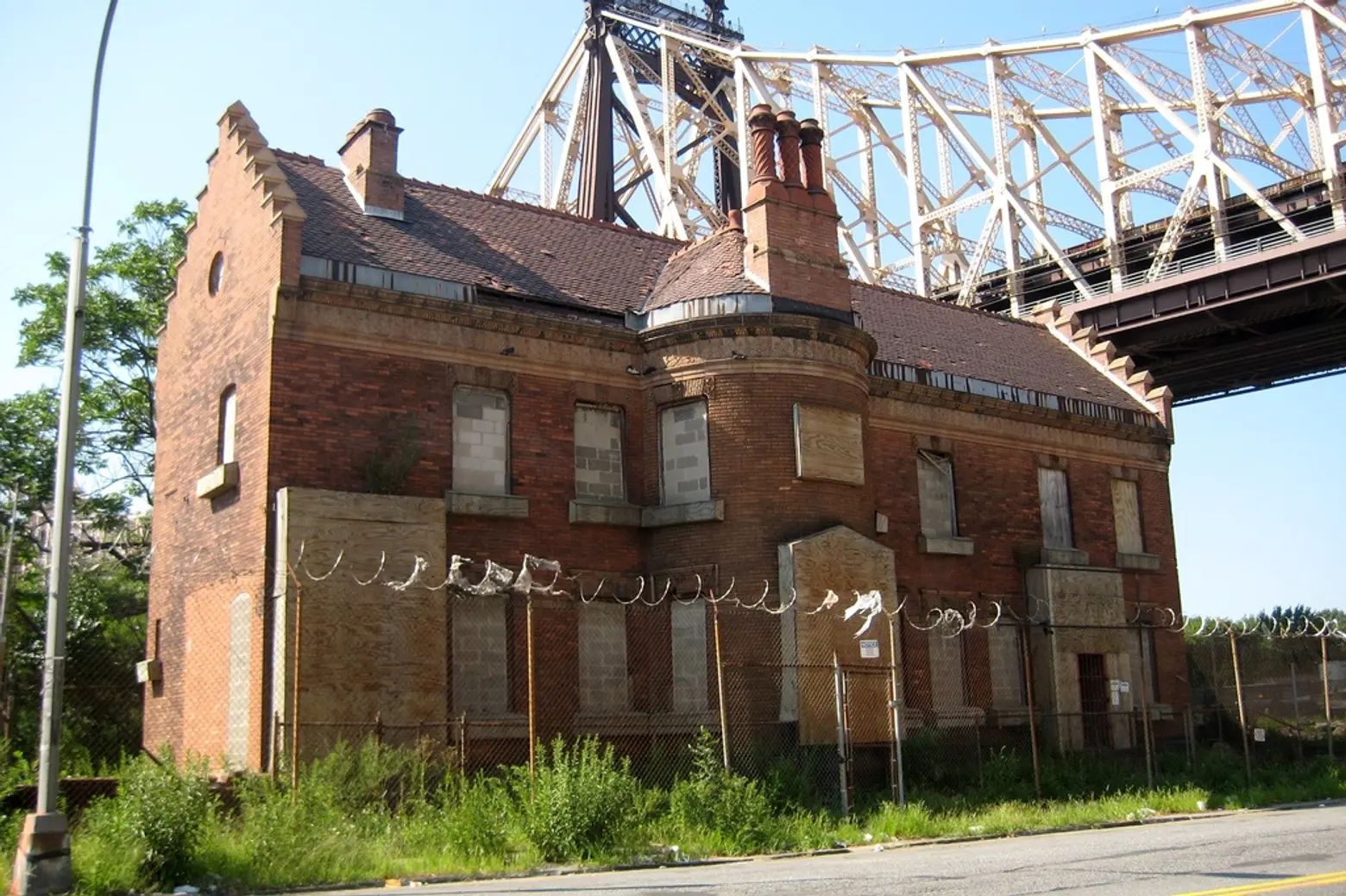 Photo via wallyg via photopin cc
Photo via wallyg via photopin cc
Located underneath the Queensboro Bridge in Long Island City (401 Vernon Boulevard), this tiny structure housed Orlando Potter’s New York Architectural Terra Cotta Company from 1886 to 1932. It was the first, and for a long time the only, such company in the city, and supplied terra cotta for over 2,000 projects across the U.S. and Canada, including Carnegie Hall, the Ansonia Hotel, and the Plaza.
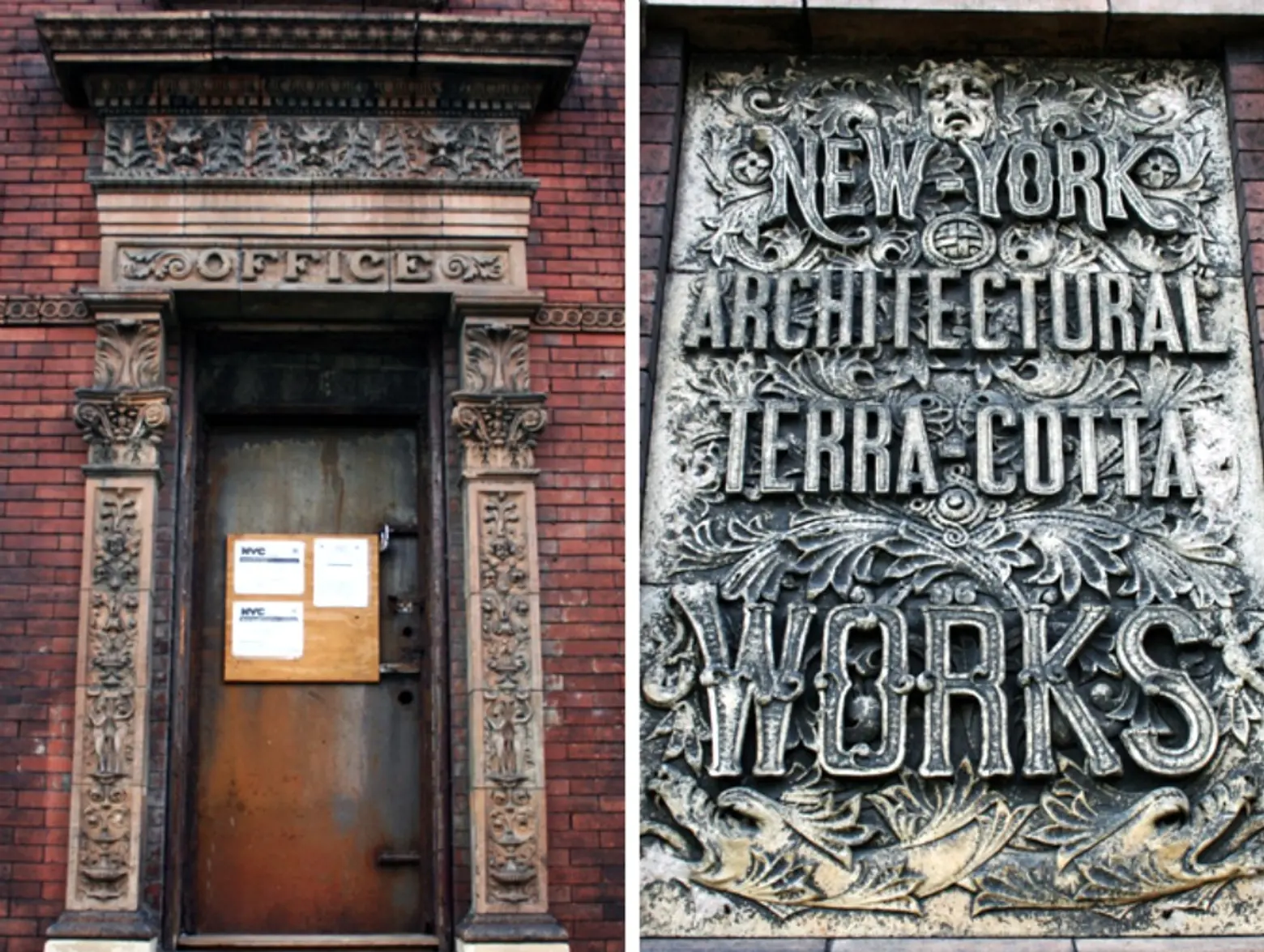 Details of the office’s terra cotta work, via Scouting New York
Details of the office’s terra cotta work, via Scouting New York
Designed by Francis Kimball, the building itself was constructed to be an advertisement for the company’s terra cotta work; its façade is filled with ornamentation. The building was landmarked in 1982, and in 2000 Silvercup Studios purchased the site with the intention to restore it.
Bayard-Condict Building
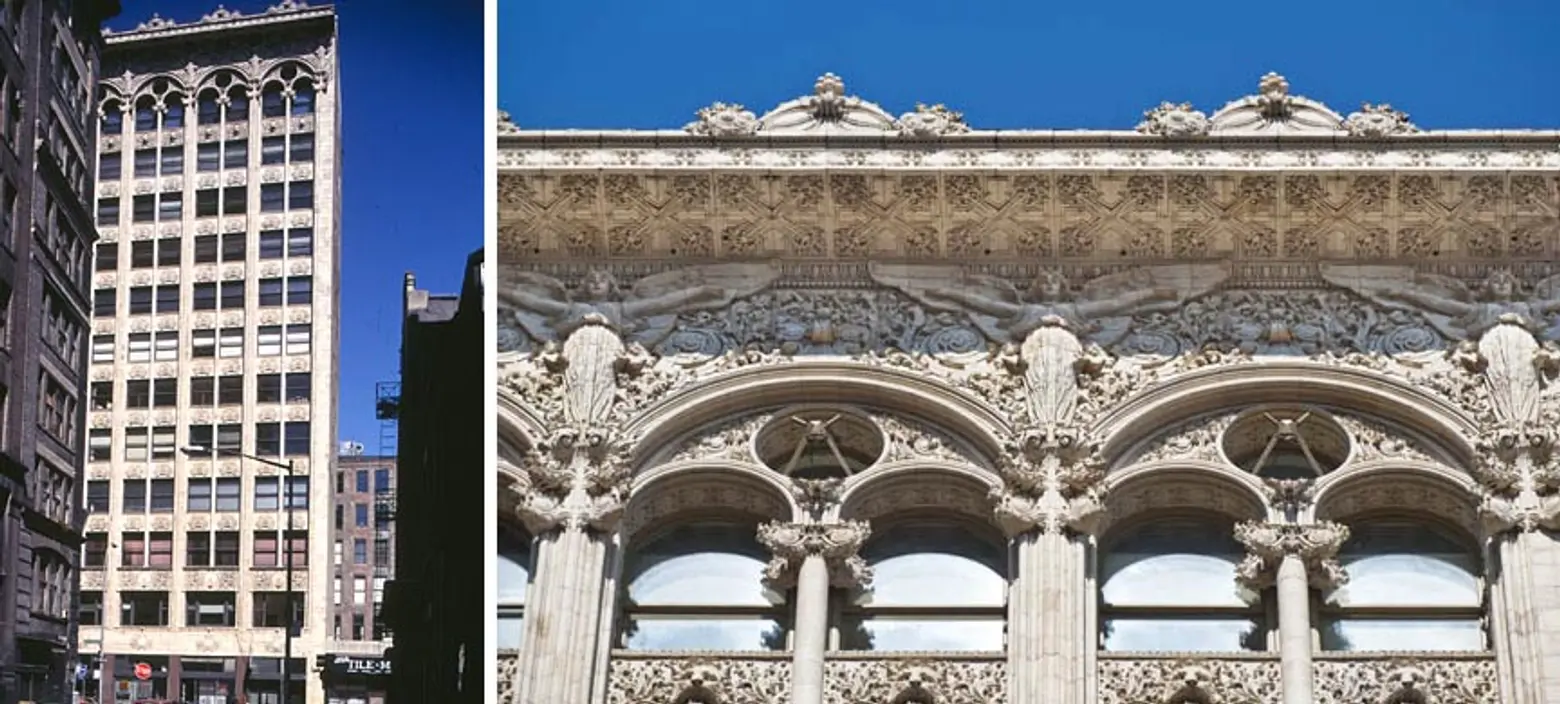
Via New York Architecture (L); Via Discover Old NY (R)
Located at 65 Bleecker Street in NoHo, the Bayard-Condict Building is many terra cotta enthusiasts’ favorite building. That could also have something to do with the fact that it’s the only work by Louis Sullivan in New York. Built in 1899 in the Chicago Style, its design was considered radical for the time, as it was one of the first steel skeletal frame buildings in New York and can’t be tied to a specific historic style.
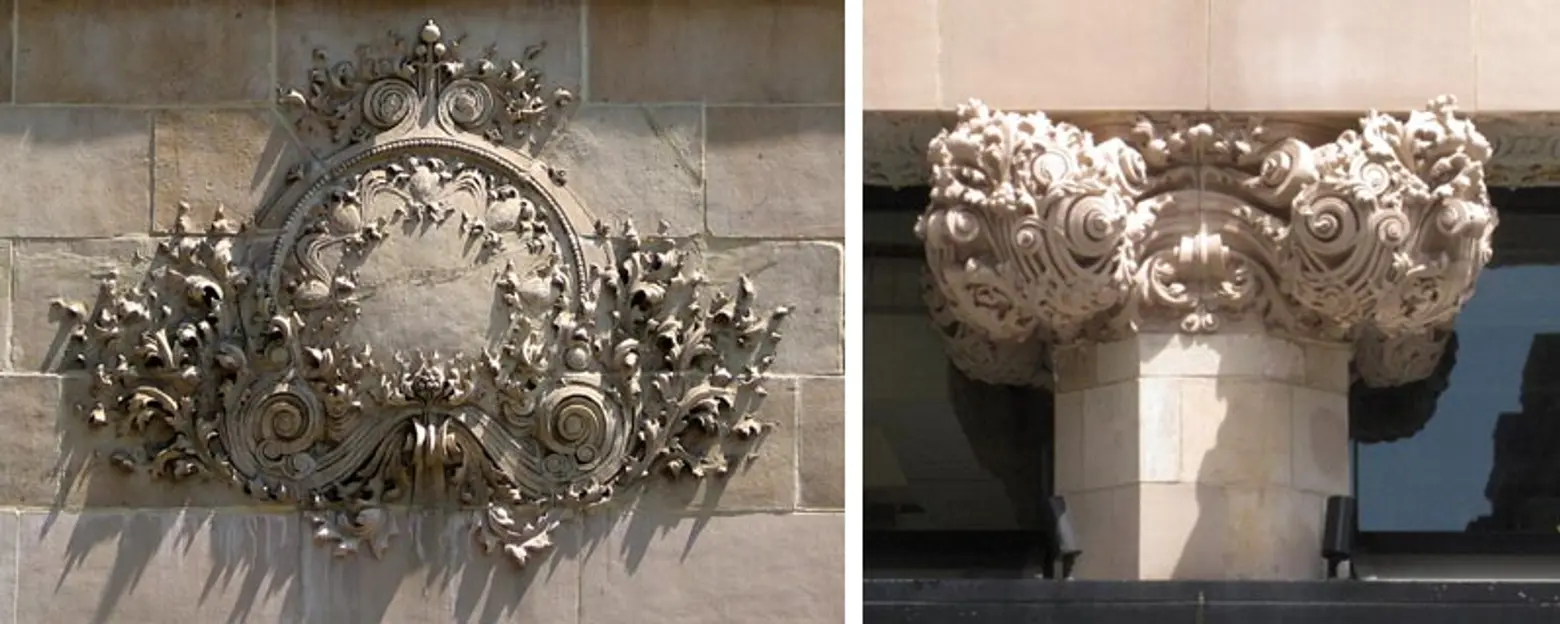
Via New York Architecture Images (L); Via GVSHP (R)
The Bayard-Condict Building (originally known as just the Bayard Building) wears its 13-story height on its sleeve, accentuated by soaring, sinewy vertical columns. The facade is divided into three sections–an ornamental base, a central body of identically stacked floors, and a highly decorated crown. Clad in terra cotta, it features ornate floral motifs at its top and bottom and 15-foot-tall angels in the cornice. The city landmark underwent a highly thorough restoration in 2000 by WASA/Studio A, during which 1,300 of the 7,000 pieces of terra cotta were repaired and reinstalled.
Potter Building
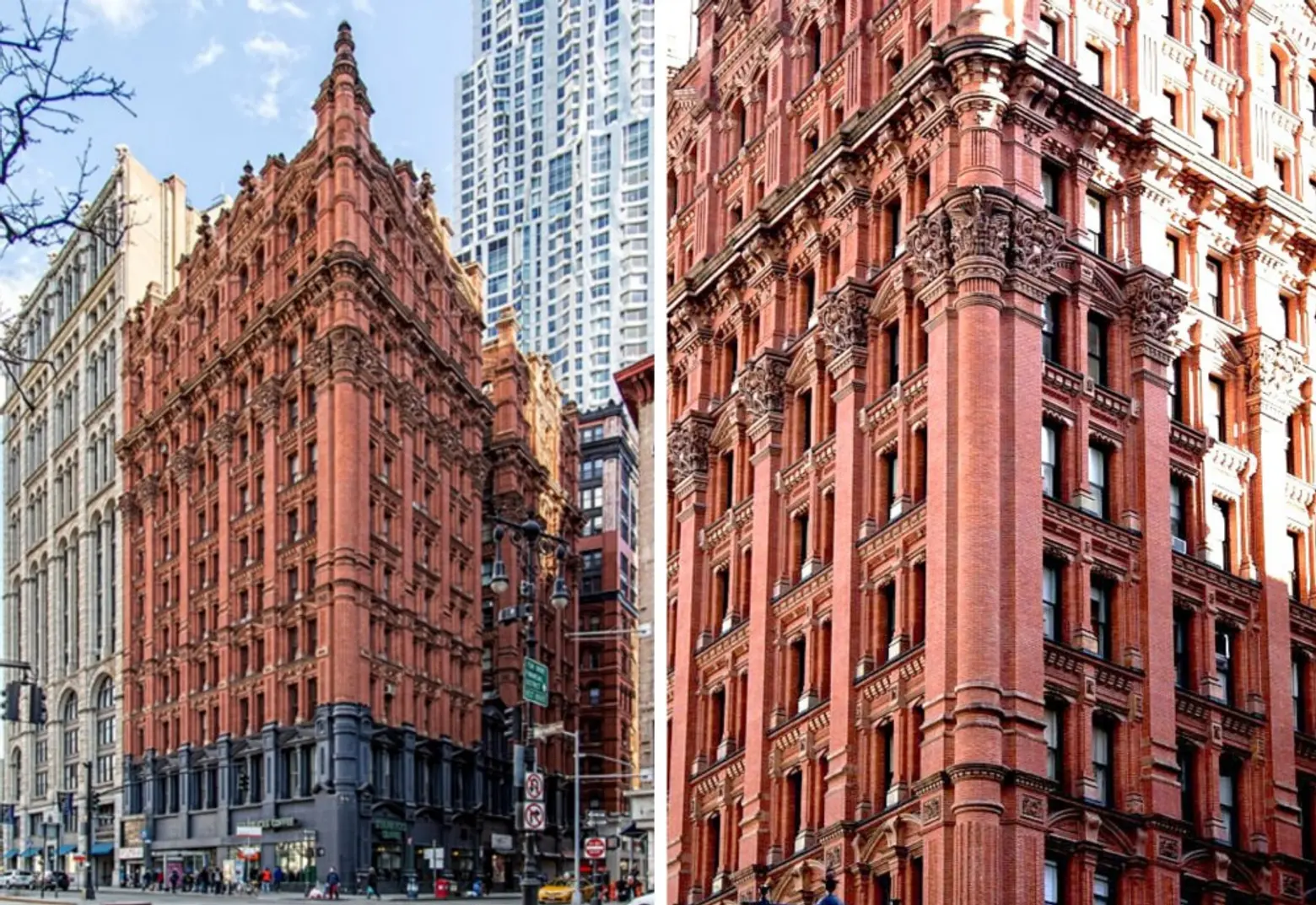 Via CityRealty (L); Via ekainj via photopin cc (R)
Via CityRealty (L); Via ekainj via photopin cc (R)
Designed in the Beaux-Arts style by Norris G. Starkweather in 1886, the Potter Building was the first in New York City to utilize a terracotta fire-protected steel frame. It employed the most advanced fireproofing technology available at the time, such as rolled iron beams, cast-iron columns, brick exterior walls, and 40-inch-thick ground-level walls. It’s situated at 145 Nassau Street in the Financial District and occupies the entire length of the block. Its façade is embellished with eight-story vertical piers with huge terra cotta capitals, as well as a massive 11-story embedded column that wraps the corner of Nassau Street and Beekman Place.
The building’s owner, Orlando B. Potter, chose to employ terra cotta for its fire resistance and low cost, but the material had to be brought down from Boston. Seeing the success of his office tower, Potter decided to open a terra cotta company in New York to supply other buildings in the city that wished to feature the material, and so the New York Architectural Terra Cotta Company was formed. The Potter Building was converted to apartments in 1981 and designated a New York City landmark in 1996.
36 Gramercy Park East
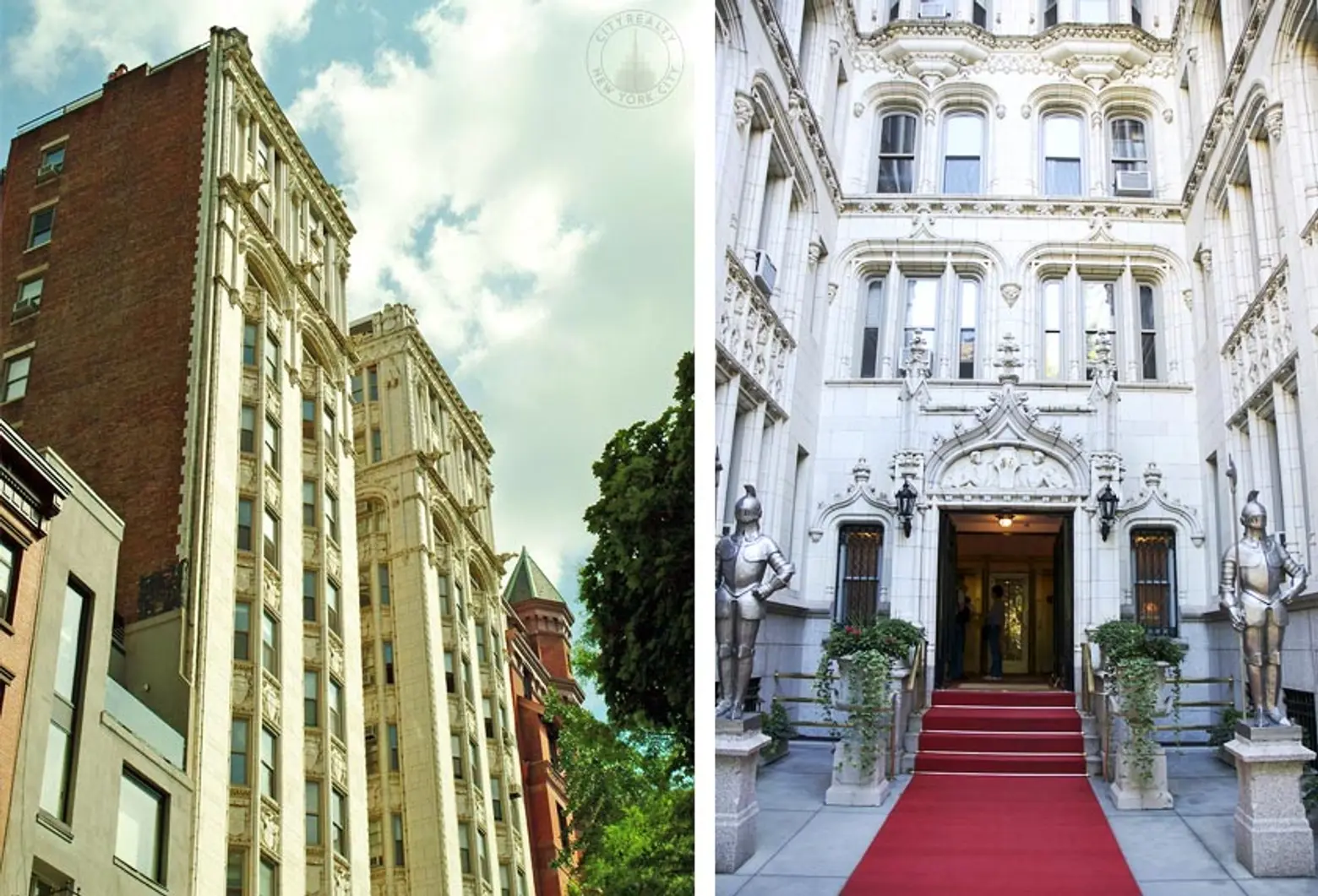
Via CityRealty (L); Via cc (R)
Though a lesser known terra cotta gem, 36 Gramercy Park East is still chock full of ceramic ornamentation. Designed by James Riely Gordon in 1910, the 12-story building is known for its deep recessed entryway flanked by two knights in full armor and white terra cotta facade with delicate spandrels and bay windows. In 2009, the building underwent an interior overhaul and sales began on the 53 co-op units.
Fred French Building
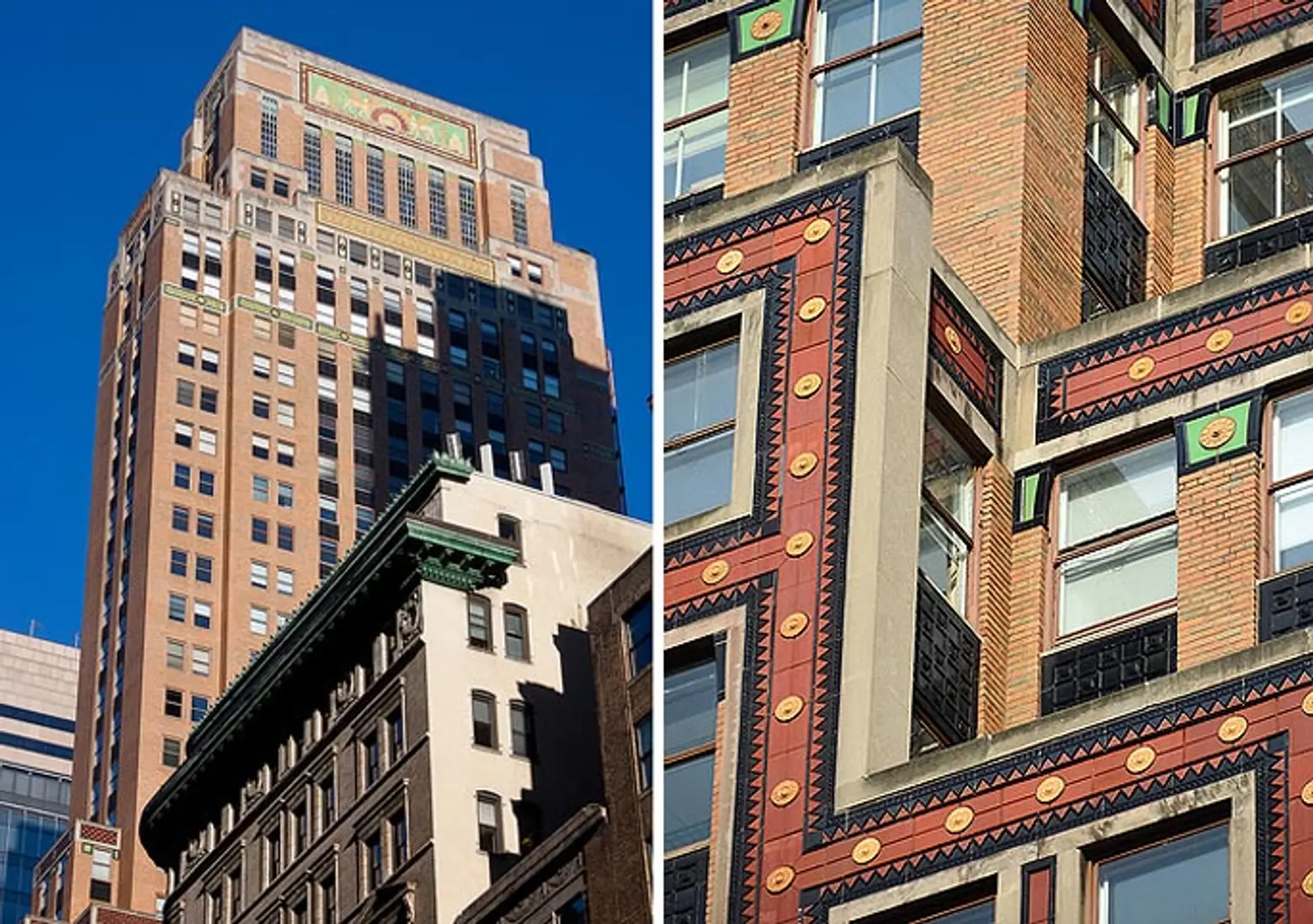
Via jkocan via photopin cc (L); Via reallyboring via photopin cc (R)
This iconic skyscraper may be best known for its abundance of Art Deco details, but what many may not know is that the Fred French Building‘s colorful ornamentation is terra cotta. It was built in 1927 to the designs of H. Douglas Ives and Sloan & Robertson on 45th Street and Fifth Avenue.
Have a favorite terra cotta building that we didn’t include? Let us know in the comments!
Lead image via Hubert Steed
Explore NYC Virtually
Leave a reply
Your email address will not be published.
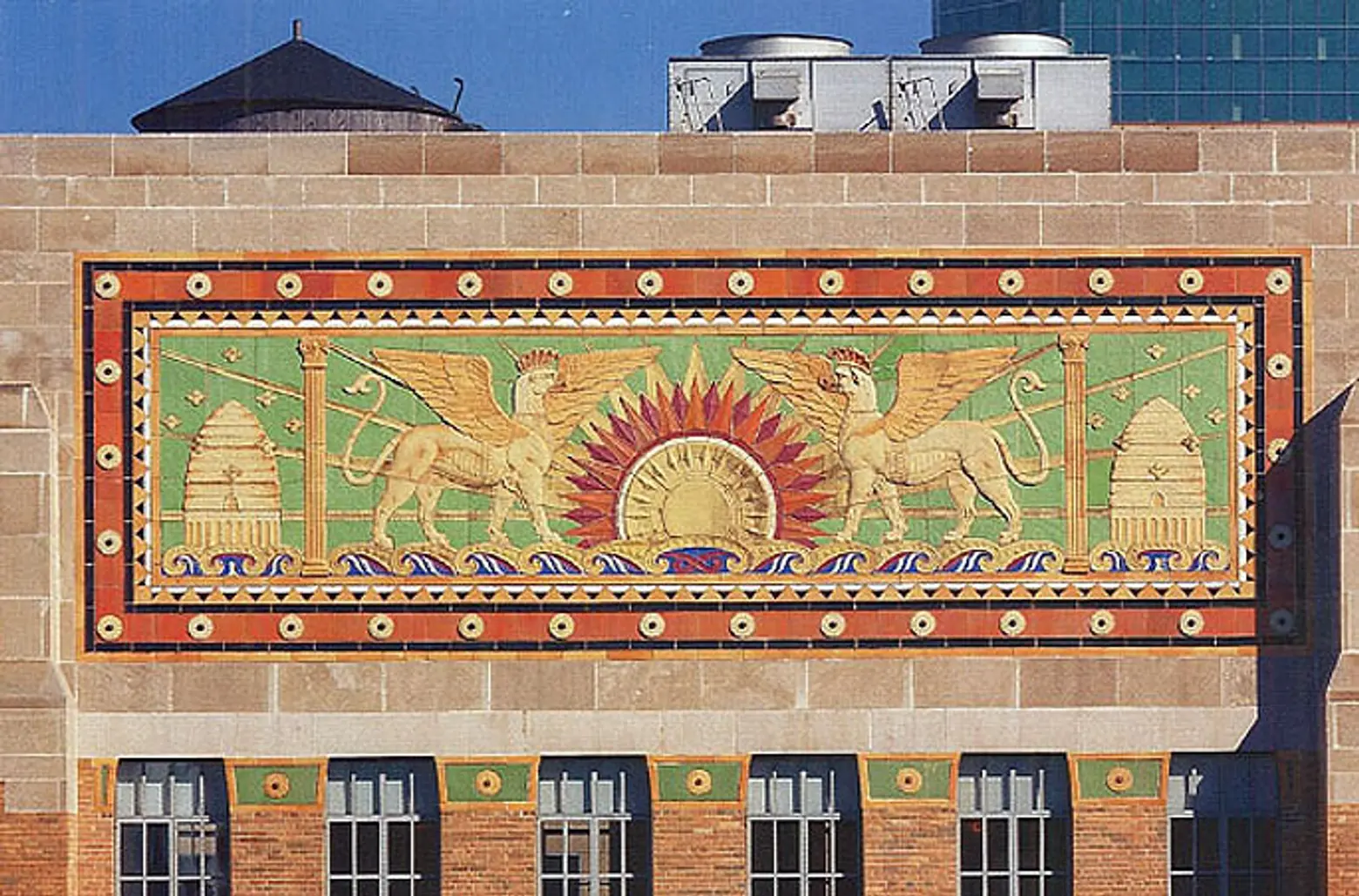
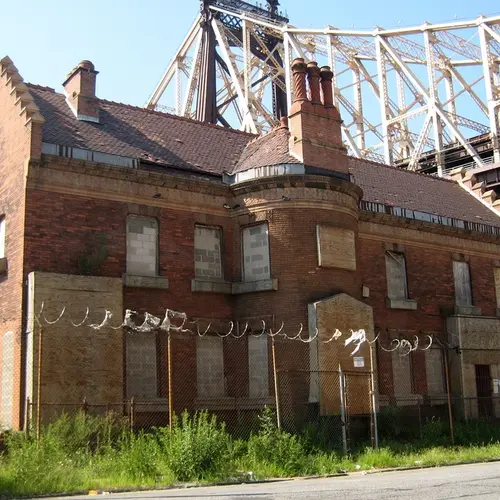
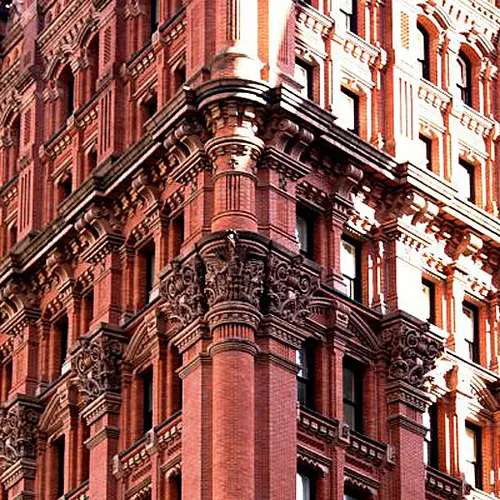
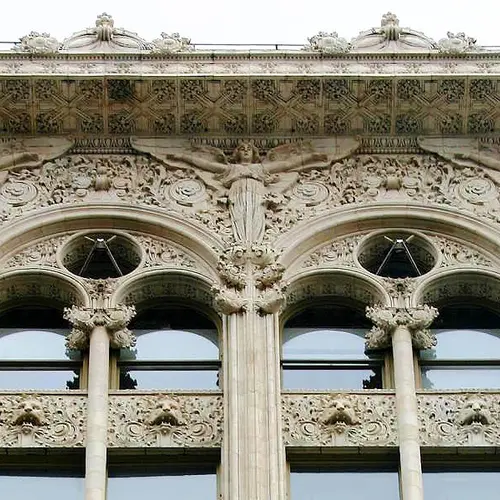
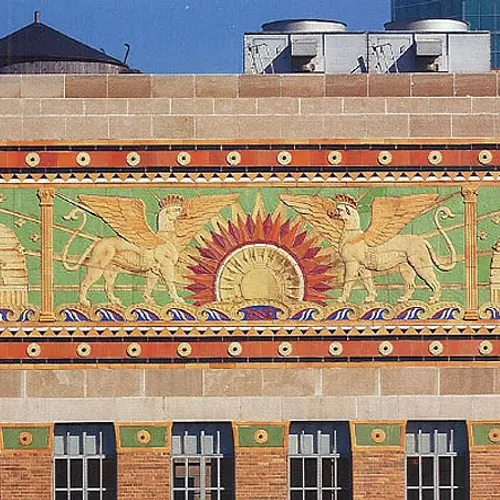
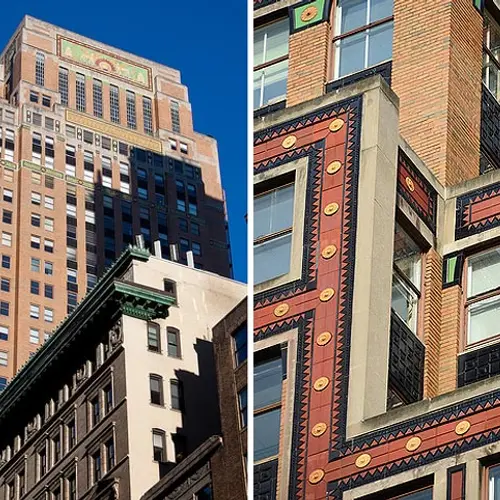
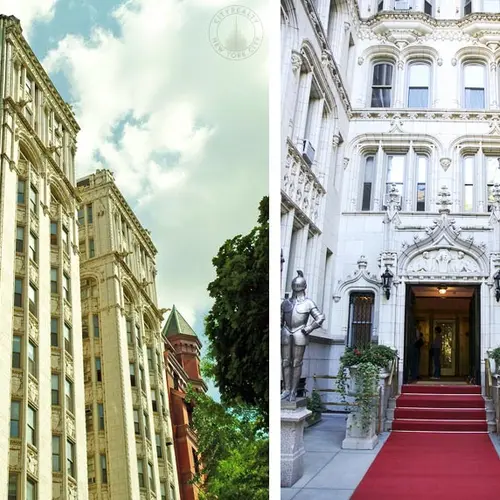
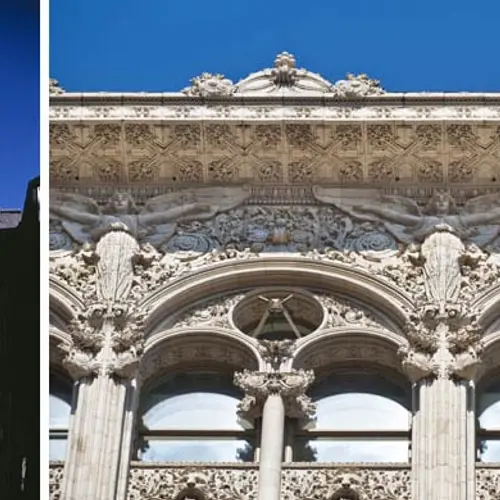
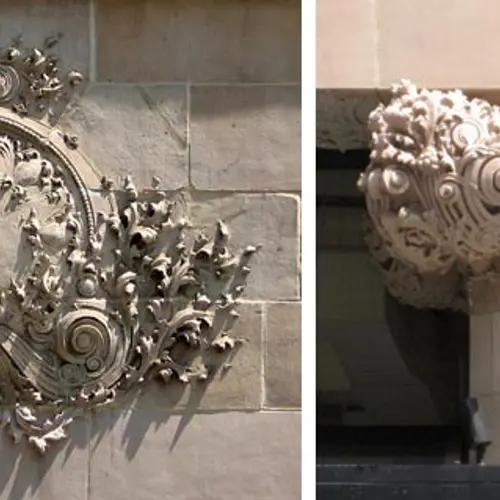
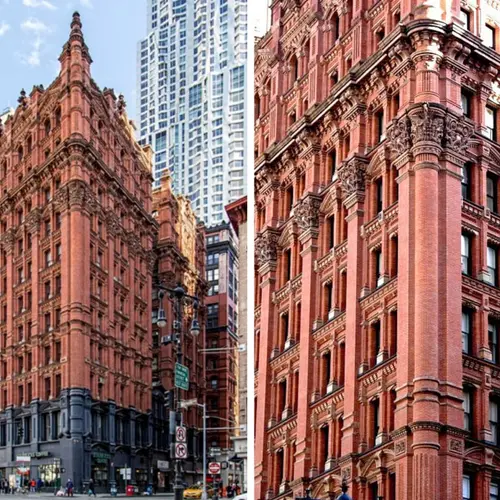
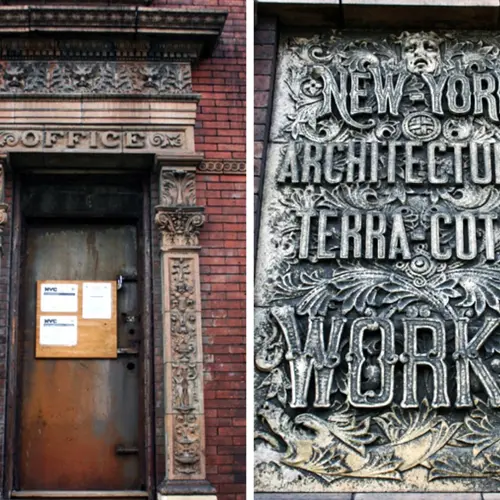
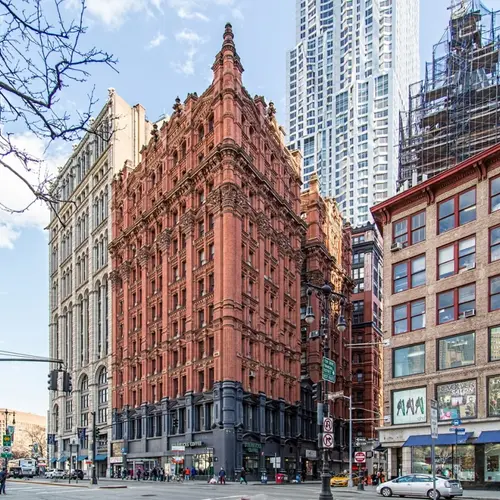
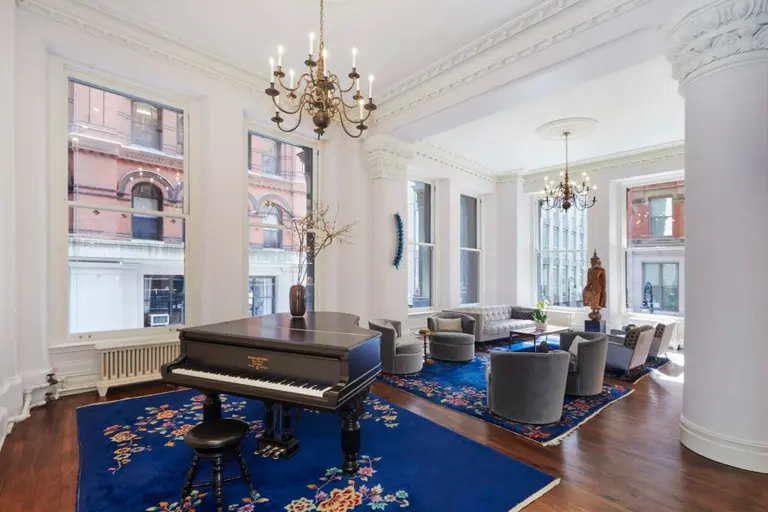













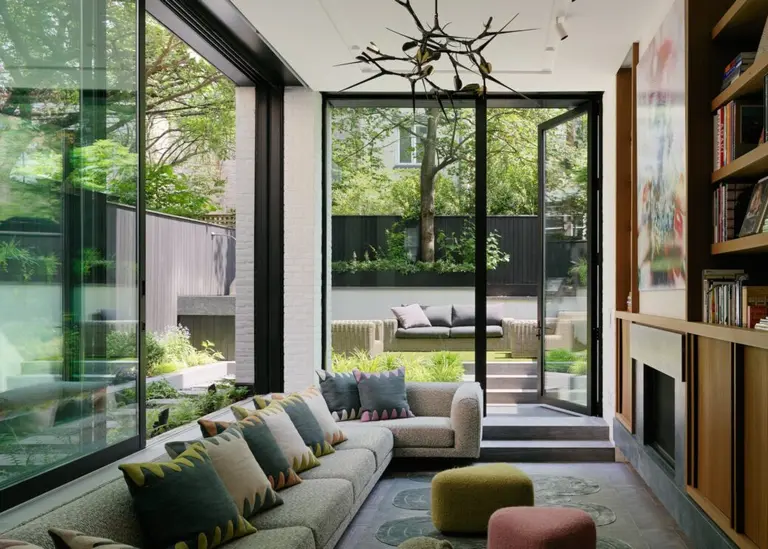












http://www.nytimes.com/2004/03/05/nyregion/9-11-s-miracle-survivor-sheds-bandages-1907-landmark-will-be-restored-for.html
This link is to 90 West Street, which burned for four days after 9/11–but did not fall.